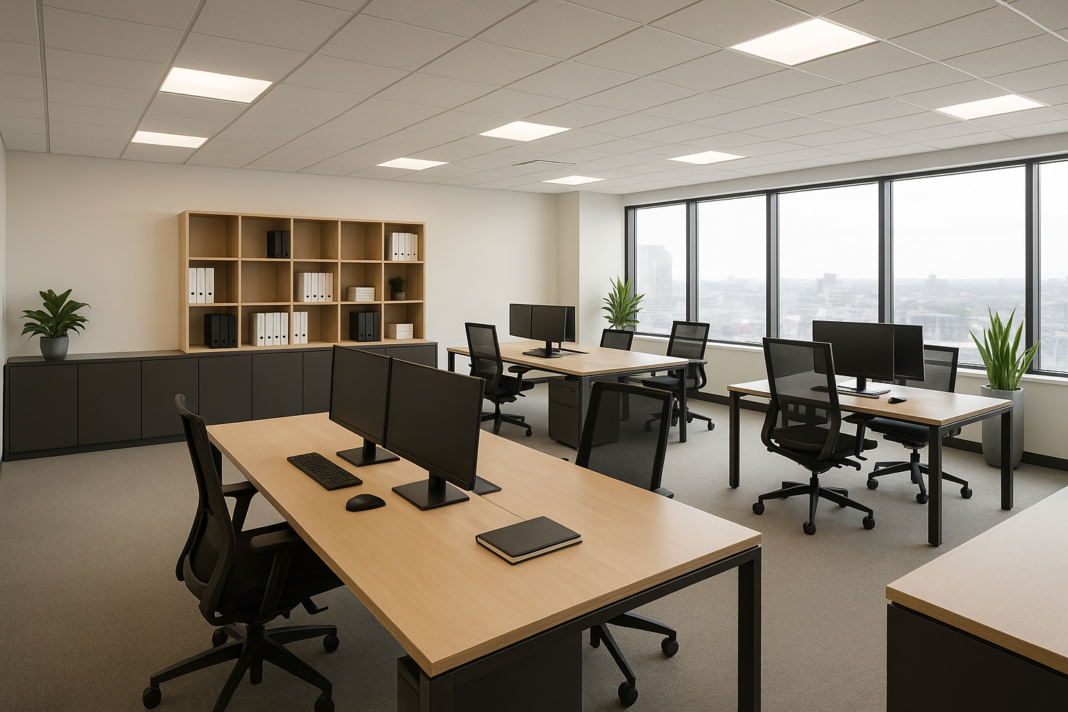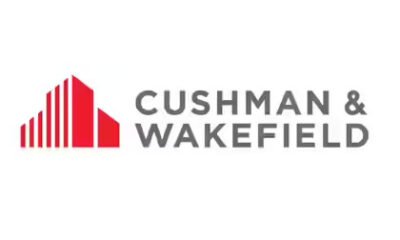News
50% of India’s Office Stock in Top 7 Cities Hold Asset Enhancement Potential

New Delhi, May 12, 2025: CBRE South Asia Pvt. Ltd, India’s leading real estate consulting firm, announced the findings of its report ‘From Existing to Exceptional: A Strategic Approach to Retrofitting Indian Office Spaces’ on Monday.
Per the report, approximately 50 per cent office inventory across the top seven cities, encompassing integrated technology parks and standalone properties, represents stock exceeding a decade in age. This significant proportion, out of a total stock of approximately 882 million sq ft, suggests strong potential for retrofitting and subsequent value enhancement.
With occupiers increasingly prioritising future-ready, high-performance spaces, ageing assets face risks of declining occupancy, stagnant rents and potential functional obsolescence.
Notably, 27 per cent of the total office stock is over 15 years old and 23 per cent is 10–15 years old while just 28 per cent is less than 5 years old. The ageing stock highlights the urgent need for strategic upgrades and retrofitting to align with evolving workplace expectations and sustain asset competitiveness.
The report further states that nearly 45 per cent of India’s decade-old office stock—over 200 million sq ft—is concentrated in Bengaluru and Delhi-NCR while Mumbai and Chennai account for another 32 per cent.
This underscores the substantial potential for asset upgradation in these key gateway markets. Rising demand for modern workspaces makes upgrading older office assets a strategic priority, turning outdated buildings into competitive and high-performing properties.
With new supply trailing demand, targeted upgrades present a timely opportunity for landlords and developers to unlock value, boost investor returns and strengthen the commercial real estate market.
Office buildings—spanning 434 mn sq ft—have been estimated as candidates for upgradation based on asset ownership and age. These assets represent an investment potential of about INR 304 to 520 billion. Retrofitting assets can meet occupier expectations around sustainability, wellness, and tech-readiness—while offering potential rental premiums of up to 20 per cent (and even potentially surpassing 30-40 per cent in some instances) depending on market conditions.
Across key seven key cities, strategic retrofitting presents a transformative opportunity to unlock asset value and meet evolving occupier demands. In Bengaluru, approximately 130-140 mn sq ft of the city’s 230 mn sq ft office stock—concentrated in ORR, EBD and Whitefield—offers an upgrade potential worth INR 95–162 billion. Retrofitting these assets can yield rental premiums of up to 20 per cent, making it a compelling value-enhancement strategy.
Chennai offers similar potential with about 52-57 mn sq ft of its 89 mn sq ft stock identified for upgrades, particularly in OMR Zone 1, OMR Zone 2 and Mount Poonamallee High Road. The estimated assets present an investment opportunity of INR 39–66 billion, with rental premiums expected to yield up to 20 per cent.
In Gurugram, around 45-50 mn sq ft of its 95 mn sq ft office inventory is ripe for retrofitting, largely concentrated in DLF Cybercity, Golf Course Road, Ext. Golf Course Road and NH8 (before-Rajiv Chowk). Upgrading the identified properties could offer an investment opportunity of INR 33–56 billion with achievable rental premiums up to 30 per cent.
Together, these city-level opportunities underscore the potential of strategic retrofitting to reshape India’s commercial office landscape, driving both asset performance and long-term occupier satisfaction.
Advantages of enhancing office assets
Ongoing Benefits
Tenant savings and appeal
- Lower CAM and utility bills, modern amenities and a healthy environment improve tenant satisfaction.
Stronger tenant retention and leasing velocity
- Efficient, flexible spaces reduce churn and lease faster in high-demand markets.
Enhanced occupier health and well-being
- Better air, light and insulation create healthier, more productive work environments.
Improved safety and resilience
- Structural and system upgrades enhance safety, disaster resistance and code compliance.
Improved efficiency and lower operating costs
- Smart systems and efficient infrastructure reduce energy use, maintenance and operational expenses.
Long–term Benefits
Positive Brand & Market Differentiation
- Modern, green properties strengthen brand image and stand out in competitive markets.
Enhanced asset and capital value
- Upgraded, sustainable buildings attract premium tenants and investors, boosting value and positioning.
Support for talent attraction
- Well-designed, wellness-focused spaces help employers attract and retain top talent.
ESG alignment and institutional appeal
- Sustainable assets meet global occupier and REIT criteria, increasing investor interest.
Futureproofing and flexibility
- Smart tech, modular layouts and adaptive systems prepare assets for evolving needs.
Increased asset liquidity and portfolio stability
- High-quality, future-ready assets draw stronger demand and offer long-term resilience.
Urban regeneration an community impact
- Revitalising old assets supports walkability, preserves heritage and boosts local vitality.
Sustainability and environmental impact
- Retrofitting supports net-zero goals, reduces carbon footprint and limits construction waste.
Anshuman Magazine, chairman and CEO, India, southeast Asia, Middle East and Africa, CBRE, said, “The Indian office sector is undergoing a fundamental shift, recognising the immense potential in strategically retrofitting our existing Grade A inventory.”
This substantial 434 mn sq ft asset base, representing a potential INR 304-520 billion investment, offers a vital pathway to meet the strong occupier demand for modern, high-performance workspaces and simultaneously enhance returns in a supply-constrained market, he added.
“Retrofitting today is no longer a superficial upgrade but a sophisticated, data-backed approach integrating meticulous asset benchmarking, thorough structural and technical evaluations, and tech-fuelled transformation for significant enhancements.”
This robust retrofitting framework aligns long-term financial goals with crucial upgrade factors and a commitment to sustainability. “By embracing retrofitting as a continuous strategy, we ensure these assets remain resilient, competitive, and highly attractive to investors in the evolving real estate landscape.”
Gurjot Bhatia, MD, Asia, PJM Advisory, Turner & Townsend, said, “India’s office market stands at an exciting crossroads. With about 434 mn sq ft of existing office spaces, we see a significant opportunity to not just modernise but to truly elevate these assets for the future.”
The path forward involves a holistic approach which includes bolstering safety, access and compliance through measures like advanced CCTV surveillance and door frame metal detectors, enhancing amenities and lifestyle with gymnasiums, daycare facilities and retail outlets, and creating vibrant outdoor and community spaces featuring landscaped areas and sculptures.
“By strategically retrofitting with a focus on data-driven insights, sustainability and the evolving needs of occupiers, we can transform this existing stock into high-performance, resilient workplaces that meet the demands of tomorrow’s tenants and an increasingly ESG-conscious investment landscape.”

 News4 weeks ago
News4 weeks agoMaharashtra Govt and Lodha Developers sign Rs 30K-Crore MoU for Green Integrated Data Centre Park

 News4 weeks ago
News4 weeks agoUP RERA launches 20th Real Estate Agent Training Program at Gautam Buddha Nagar

 News4 weeks ago
News4 weeks agoHCBS Developments Appoints KBE as Construction Partner for Twin Horizon in Gurugram

 News4 weeks ago
News4 weeks agoWehouse Raises ₹25 Crore Series A Funding to Expand Tech-Driven Home Construction Across India

 News4 weeks ago
News4 weeks agoRISE Infraventures Strengthens Leadership with Appointment of Ajay Malik as CSO

 News4 weeks ago
News4 weeks ago‘Real Estate to Scale up Office and Industrial Assets Beyond 2 Billion Sq Ft By 2047’

 News2 weeks ago
News2 weeks agoSpectrum@Metro Brings Biggest Dandiya Night to Noida on September 27

 News4 weeks ago
News4 weeks agoIndia’s Logistics & Industrial Leasing Hits 30.7 MSF in H1 2025; Poised to Cross 60 MSF by Year-End: Cushman & Wakefield



























